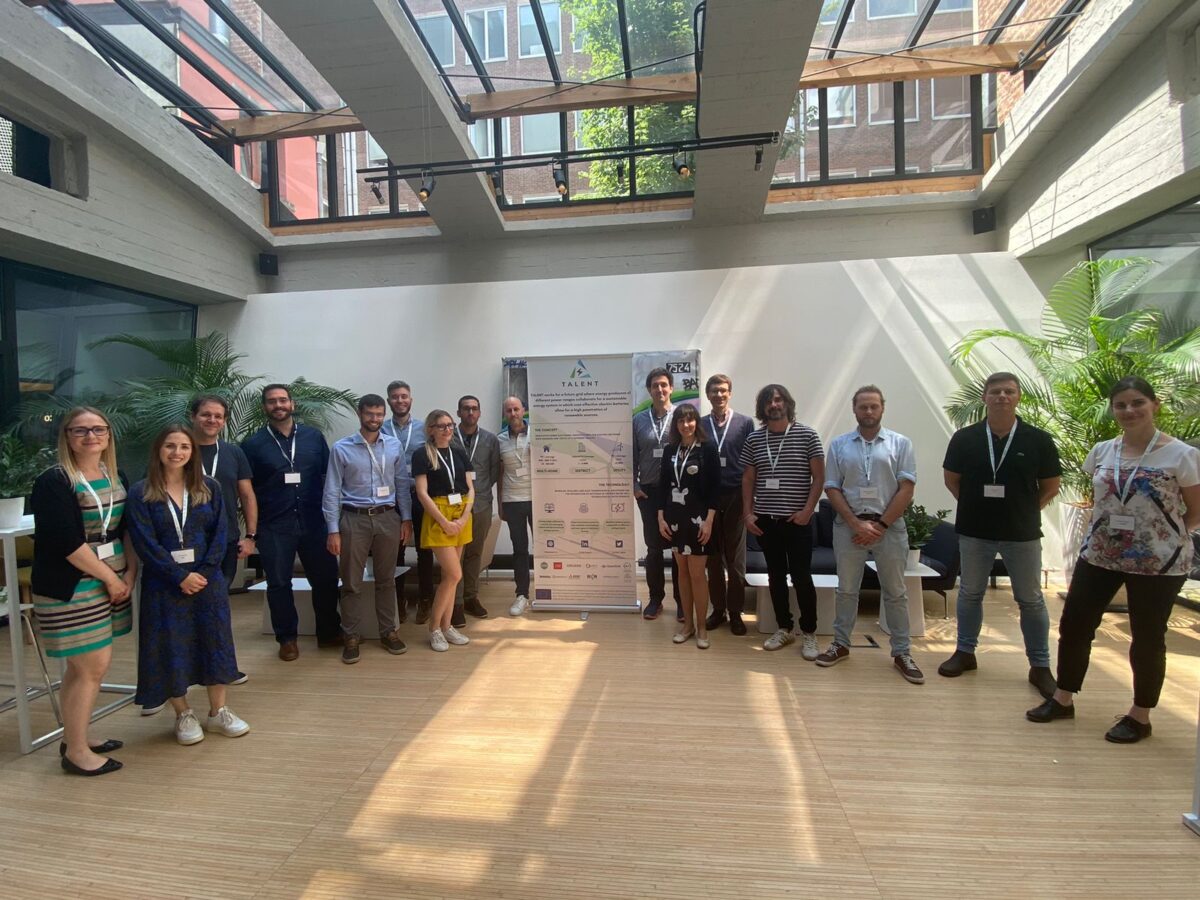
TALENT Final Event with the participation of other EU-funded projects
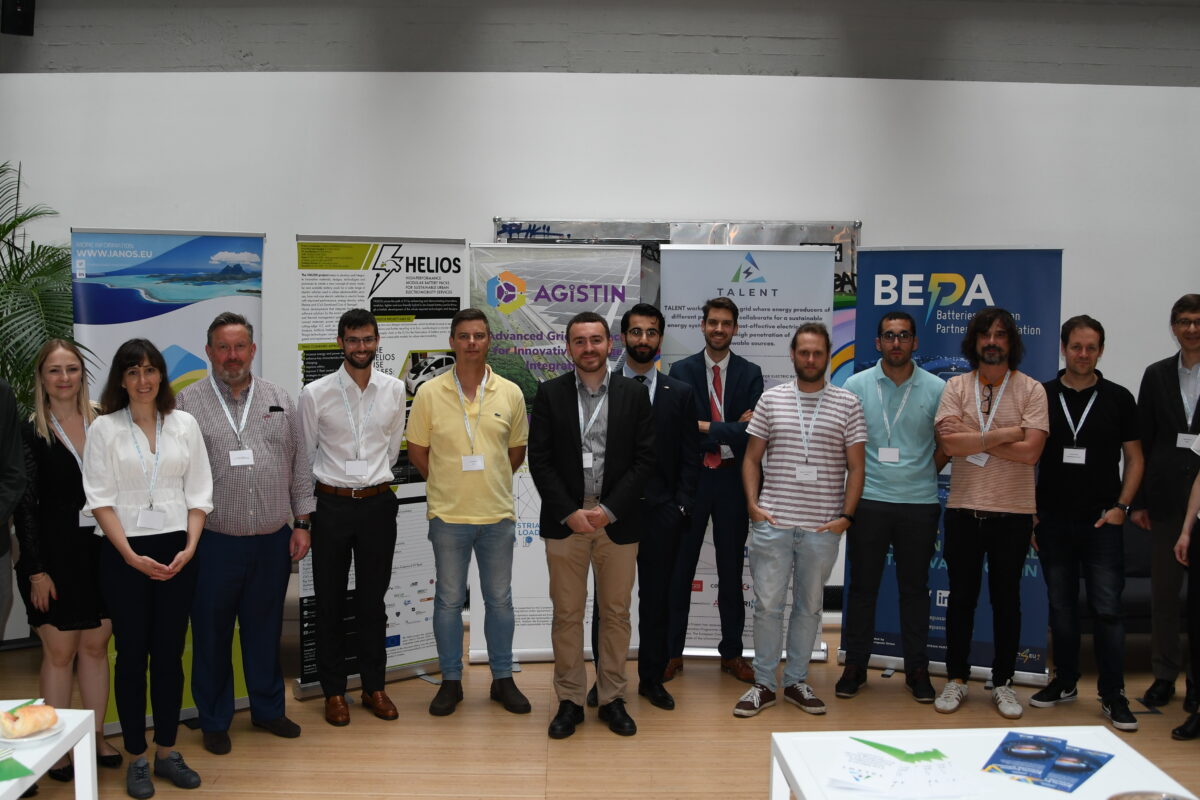
On 22 June 2023, the Final Event brought together different stakeholders, policymakers, industry and academia. The Batteries European Partnership Association and other six EU-funded projects: HELIOS, AGISTIN, LOLABAT, IANOS, ENFLATE, TIGON took part in the event. The event was held in a hybrid format at the L42 Business Center and online. The event aimed to discuss the latest developments in the battery sector, explore the potential of green battery technologies, and foster collaboration between industry and research.
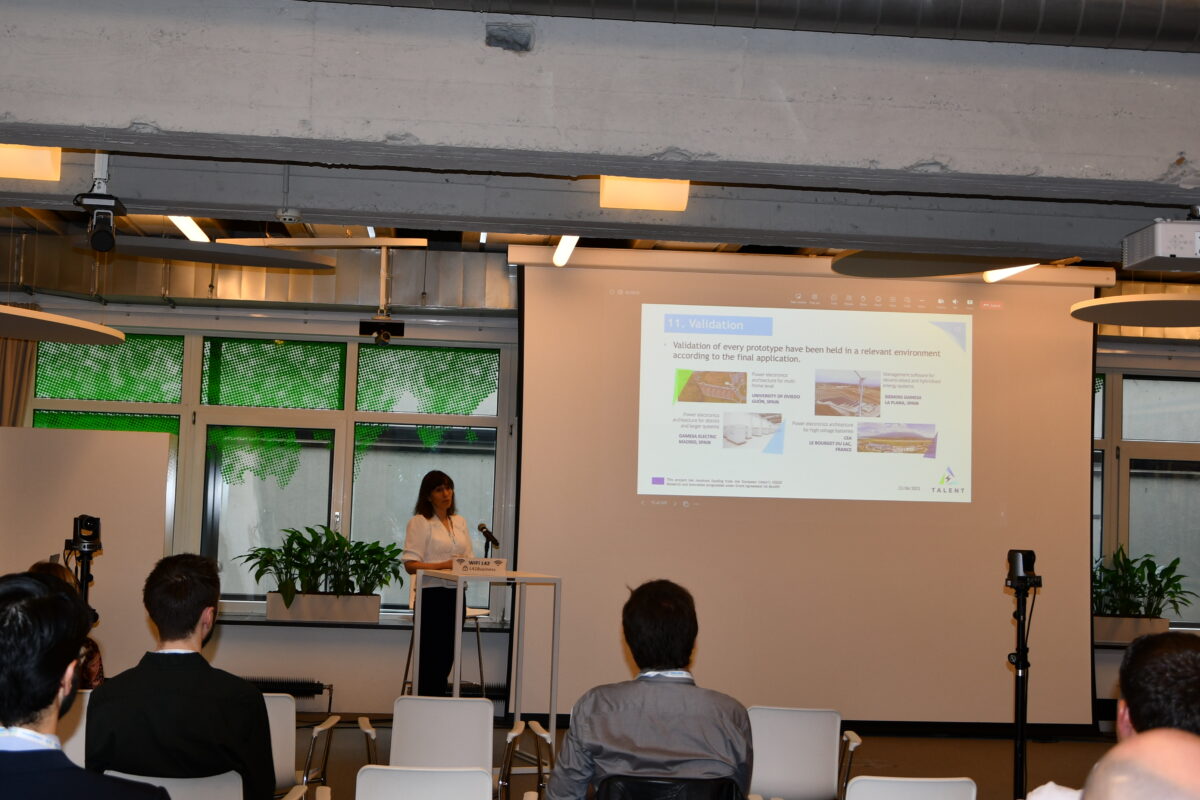 |
Marian Gallego, the project coordinator from CARTIF, gave a warm welcome before the event got underway. Marian began the series of presentations on the project results by highlighting the content goal to address the need to integrate new, small, and decentralised Renewable Energy Solutions (RES) into power grids, to provide flexible, resilient, and carefully managed grids, as well as electronic storage batteries integrated into the grid to handle the variability in energy generation and end-user demand.
|
Indeed, the delivery of some technical components was significantly affected by the pandemic, but thanks to the effort of the partners, the TALENT consortium was able to complete the project. Marian underlined the challenges that were needed to face and how the TALENT project overcame these obstacles. The main challenges were related to the need for Battery technology to be improved by increasing capabilities and efficiencies, the necessity to enhance the trustworthy and interoperable communication involving all players, from producers and consumers to Distributions System Operators (DSOs), Transmission System Operators (TSOs), addressing market needs, and to take into account also the cost. The solutions were found by TALENT through the development of new power electronics schemes to efficiently manage and transform the electric energy, DHEMS to properly address data exchange and provide operation commands, and new designs and architectures (HW side) and the Integration Software as a Service (iSaaS - SW side) which helped to achieve cost reduction.
The achieved results of the project were illustrated in:
- iBatt: Intelligent Battery module easily scalable for different applications
- 5 kV three-port, modular two-level power electronics for hybrid PV and storage system based on new IGBT devices (DC/DC and DC/AC stages)
- 2kV power chip (IGBT and FWDi)
- Medium Voltage DC/AC ANPC converter for utility scale
- Stationary Battery Digital Twin
- TALENT Control architecture for decentralised and hybridised energy systems
Every prototype has been validated in a relevant environment according to the final application. These validations took place in Spain (Gijón, La Plana, Madrid) and France (Le Bourget du Lac).
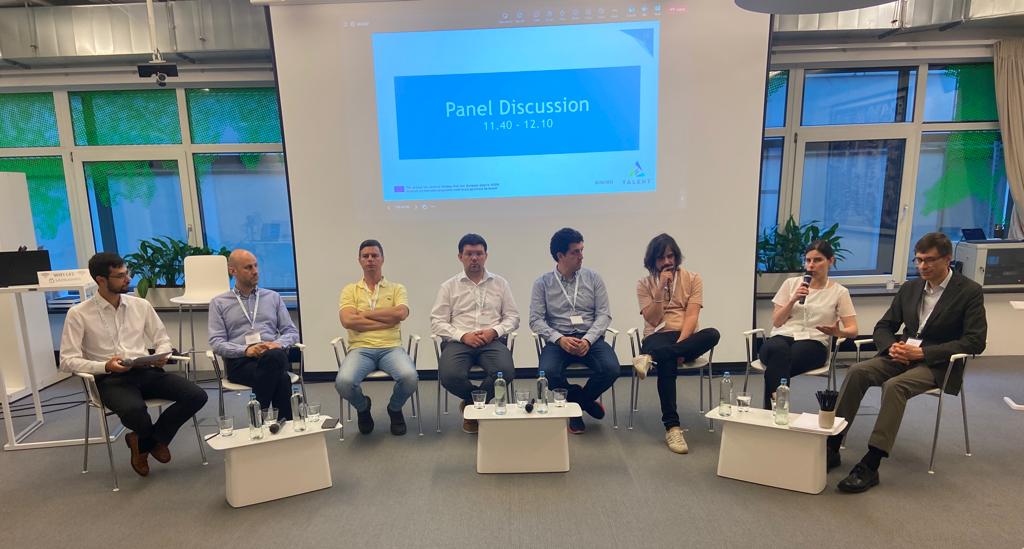
The series of presentations of the results were followed by a Panel Discussion, moderated by Lorenzo Dall’Oro from RINA-C, and aimed to answer the questions of the audience related to their achievements, discoveries, and exploitation strategies, how digital twins can contribute to the flexibility market, and how all the ambitions of the project were achieved.
In the framework of the Final event, other six EU-funded project representatives were invited to join the event to make a presentation about their projects and participate in two round tables.
Round table 1: Electric batteries integration in the electric system for flexibility purposes
 This round table was moderated by Wouter IJzermans, Executive Director of the Batteries European Partnership Association (BEPA).
This round table was moderated by Wouter IJzermans, Executive Director of the Batteries European Partnership Association (BEPA).
Wouter IJzermans, provided an introduction to BEPA and the Batt4EU Partnership: a co-programmed Partnership under Horizon Europe that gathers – on the public side – the European Commission, and - on the private side – the Batteries European Partnerships Association (BEPA) bringing together all the European battery stakeholders interested to get involved in Horizon Europe.
The BATT4EU vision is to reach a competitive European industrial battery value chain for stationary applications and e-mobility.
Its objective is to support the development of differentiating technologies in battery materials, cell design and manufacturing and battery recycling, not only in the short term for the transition but also in the long term.
The scope of BATT4EU is to try to cover the whole battery value chain from the raw materials to advanced materials, cells until the end-life process. For mobility, and therefore for the application integration, they can work with other partners.
BEPA is an industry-driven association characterized by a strong industrial network with a focus on innovation and strong connections with other relevant European Partnerships and it is aligned with research and industry priorities for the battery industry.
Wouter stressed the need to influence future calls and set the European R&I landscape for the Battery Industry. Moreover, he showed the upcoming BEPA events, focusing on the Battery Innovation Days event which will be held in Bordeaux on 14-15 November 2023 in a hybrid format.
| Tomas Jezdinsky, the representative of the HELIOS project, provided an overview of the project. HELIOS project has been funded under EU Horizon2020, running from January 2021 to December 2024. The duration of the project is 48 months. The consortium comprises 18 partners from 8 countries: Denmark, Germany, Finland, Spain, France, Bulgaria, Belgium and Turkey.
|
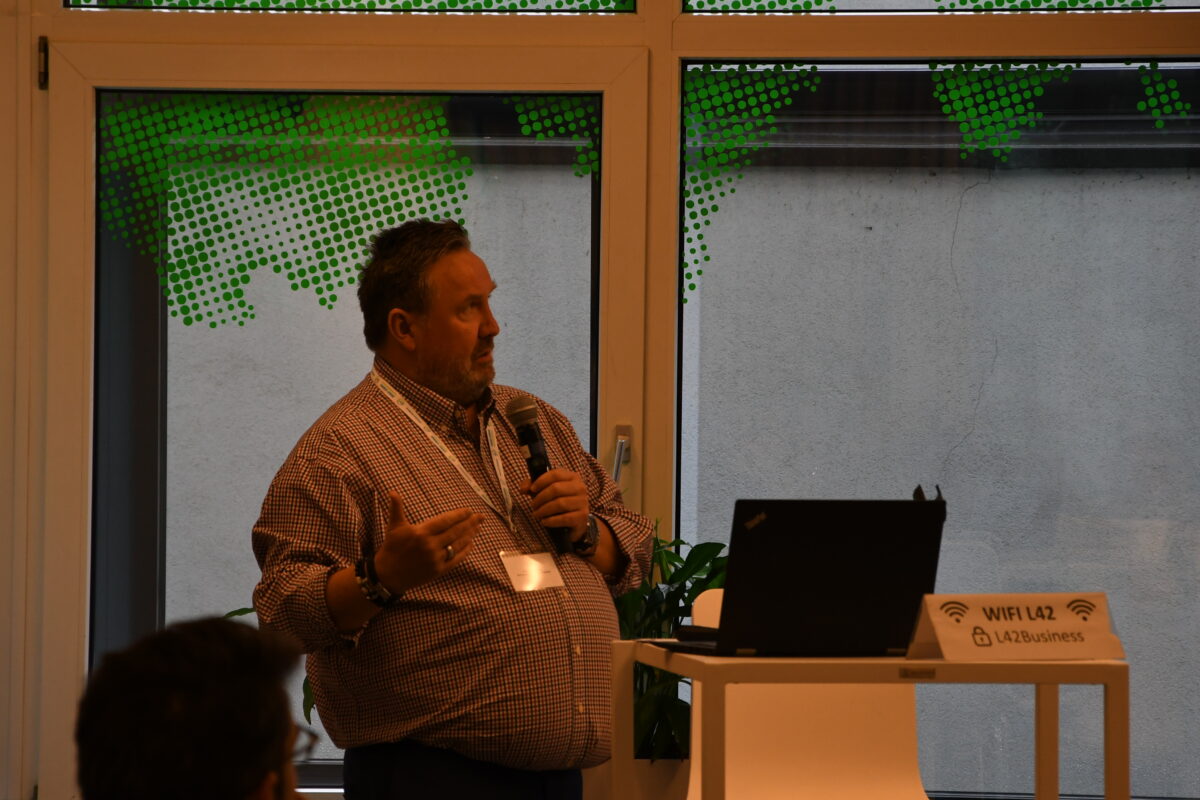 |
He highlighted the general objectives of the project: increase the energy density of Li-ion battery packs, enhance ultra-fast charging with minimum degradation, by optimizing the thermal management system and power electronics, extend EVs calendar life of 20 years, improve circular economy processes within manufacturing, assembling, disassembling and recycling, also validating new functionalities and applications for second life batteries, reduce CO2 emissions associated to operating electric vehicles by optimizing recharging schedules and tracing the carbon footprint of EV fleets.
The HELIOS project developments aim at developing and integrating innovative materials, designs, technologies and processes, and creating a new concept of smart, modular and scalable battery packs for a wide range of electric vehicles.
HELIOS project will develop an innovative hybrid battery module combining high-energy (HE) and high-power (HP) cells to achieve ambitious, scalable, and adaptable goals for many different EVs.
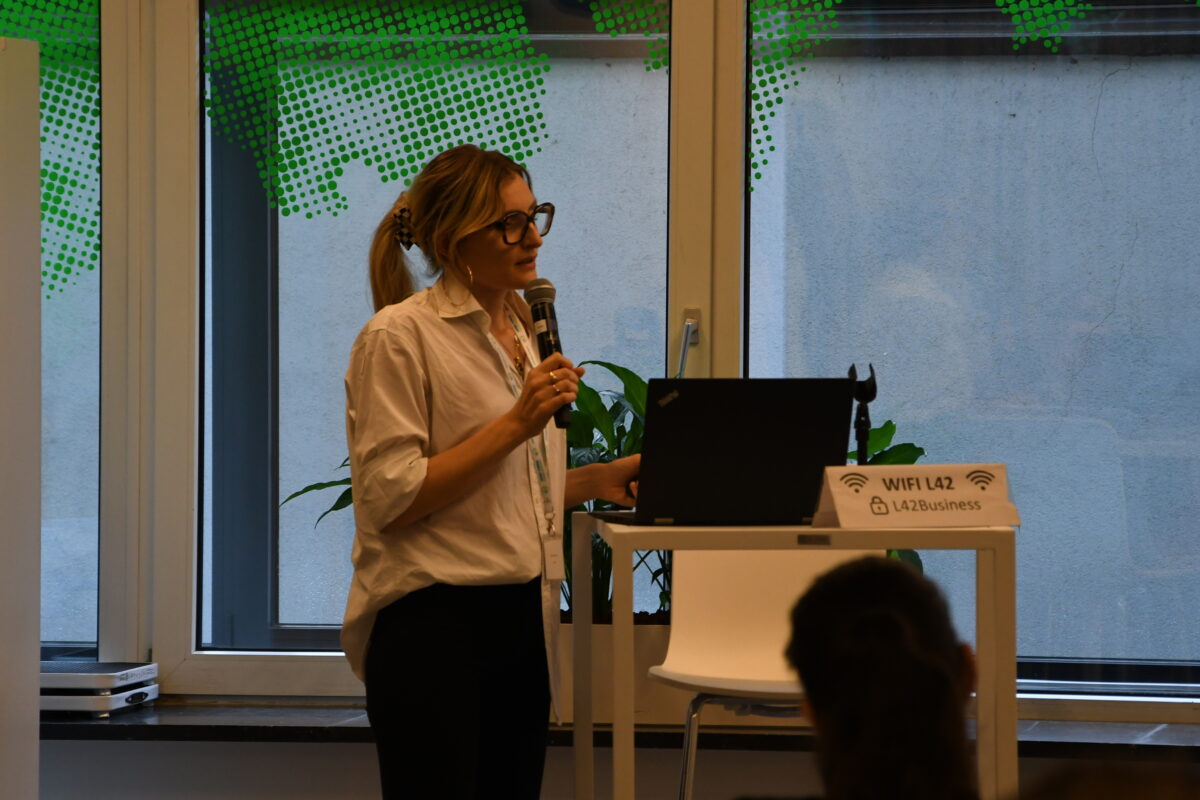 |
Nora Ganzinelli presented the LOLABAT project: long-lasting batteries. It is focused on the development of RNZB batteries production. The consortium is composed of 17 partners coming from 7 European countries. LOLABAT objectives include the improvement of cell performance and cost, cell capacity upscaling to 100Ah, the construction of battery packs with BMS and sensors, the demonstration on 5 uses cases in utility grids and industrial sites, assessment of norms and standards, environmental impact limitation and business plan and market studies. |
Nora explained the reason why research and implementation of NiZn batteries are important and why it represents an excellent technology for Stationary Energy Storage applications.
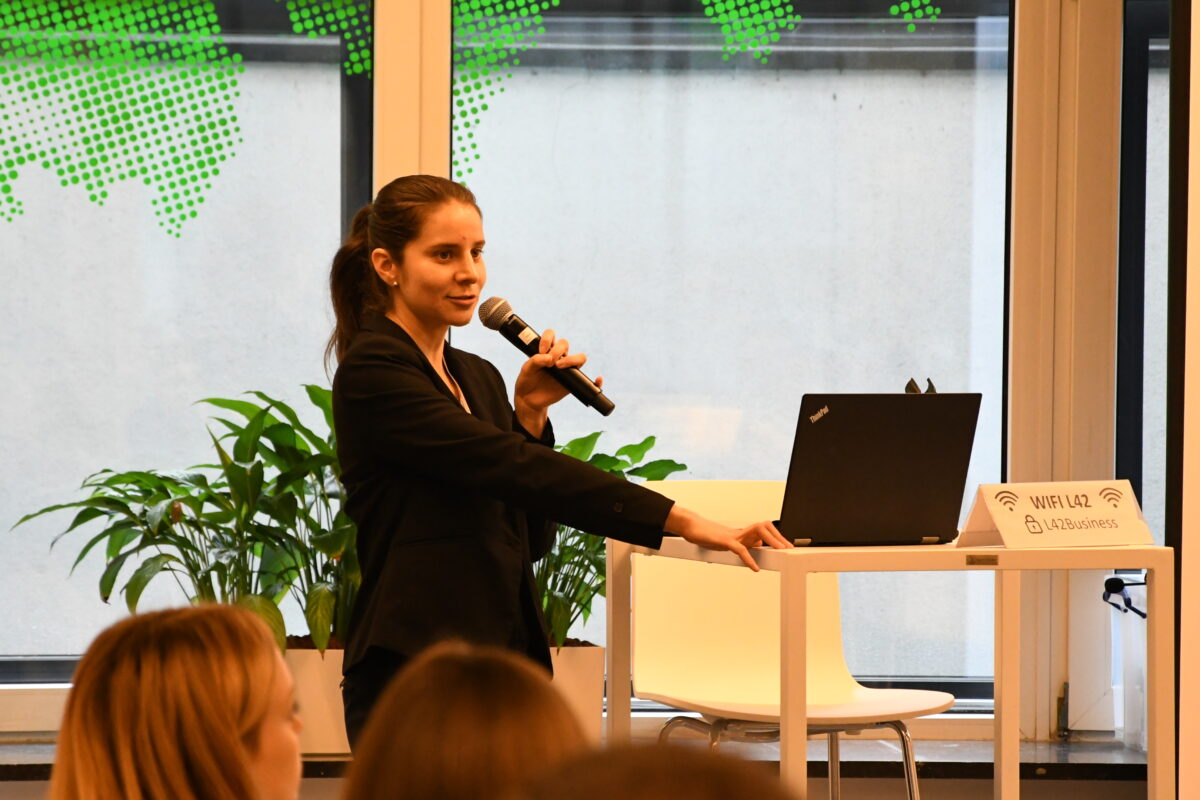 |
Maria Mazuera presented AGISTIN which stands for Advanced Grid Interfaces for innovative STorage INtegration. The project started in January 2023 (the duration of the project is 48 months). It comprises 13 partners and 1 associated partner from 9 countries.
The main objective of AGISTIN is to enable industrial grid users to rapidly deploy renewables through advanced integration of innovative energy storage technologies at the interface with the grid. |
Maria illustrated the specific objectives of the project and the ambitions: develop grid integration architectures for energy storage with on-site renewables and emerging DC end uses. This follows the DC coupling approach considered in current PV + storage hybrids, extending it to include end use, grid users and system integrators.
AGISTIN proposes innovative forms of energy storage: Aqueous electrochemical recuperators, Aluminum-ion batteries, and Irrigation systems.
The presentations were followed by Panel Discussion, where the representatives were asked several questions related to their project’s ambitions, newly developed storage solutions and longevity within the projects and the main challenge to obstacle batteries to be integrated in the next years.
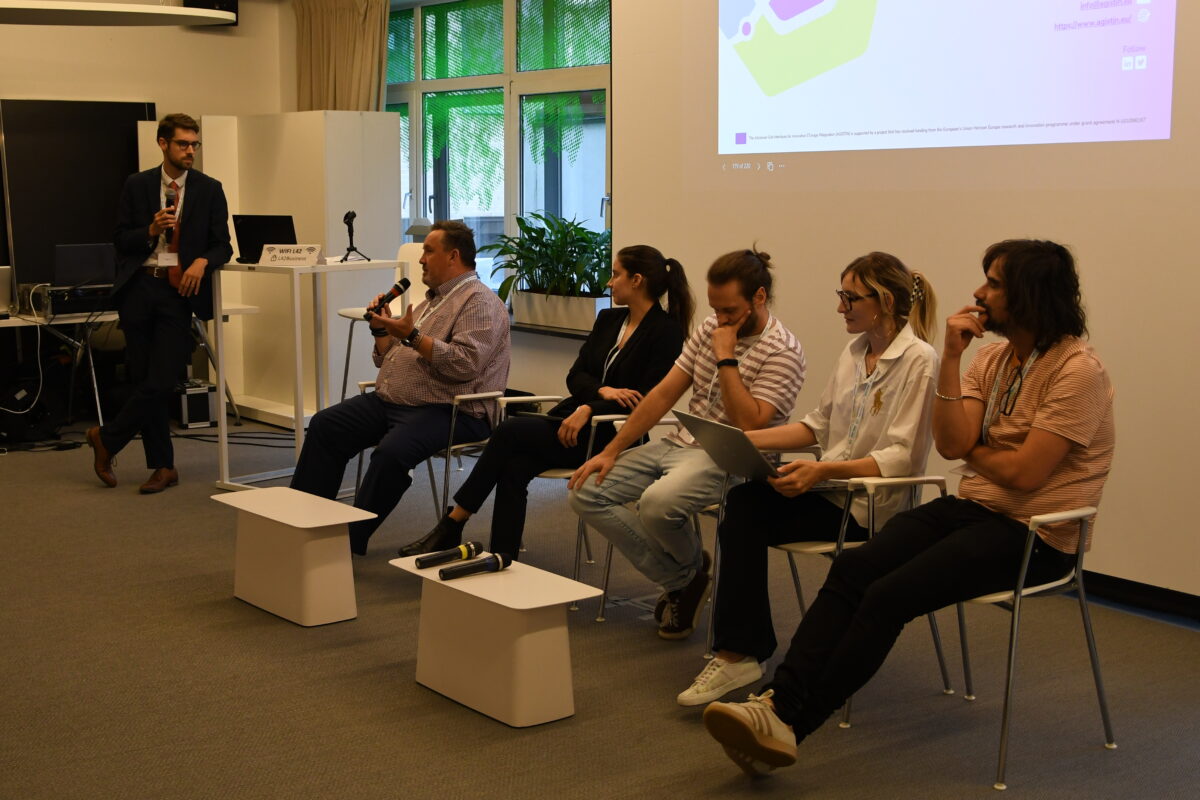
Round table 2: Management of decentralized and hybridised energy systems
| The partner of the project Darja Skrt Georgiev from CyberGrid, moderated the Round Table 2.
Darja presented CyberNoc, the Flexibility Management Platform they elaborated in CyberGrid, and its functionalities within the TALENT project: virtual power plant (VPP), flexibilities aggregation, battery management, market and Transmission System Operators (TSO) management. |
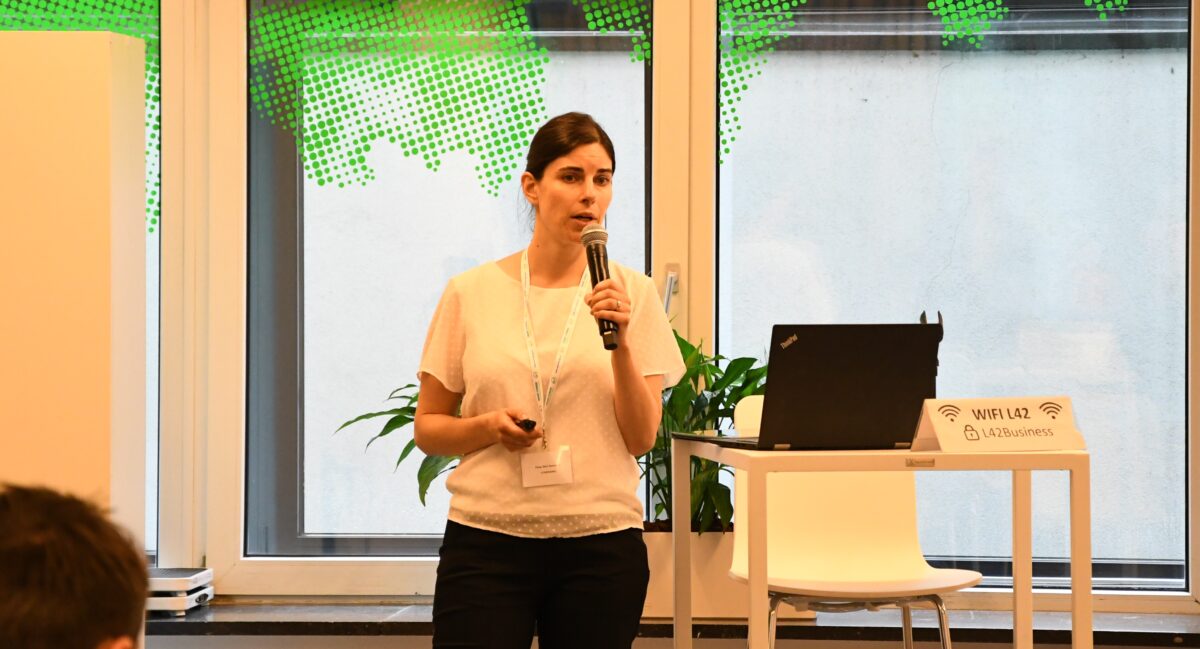 |
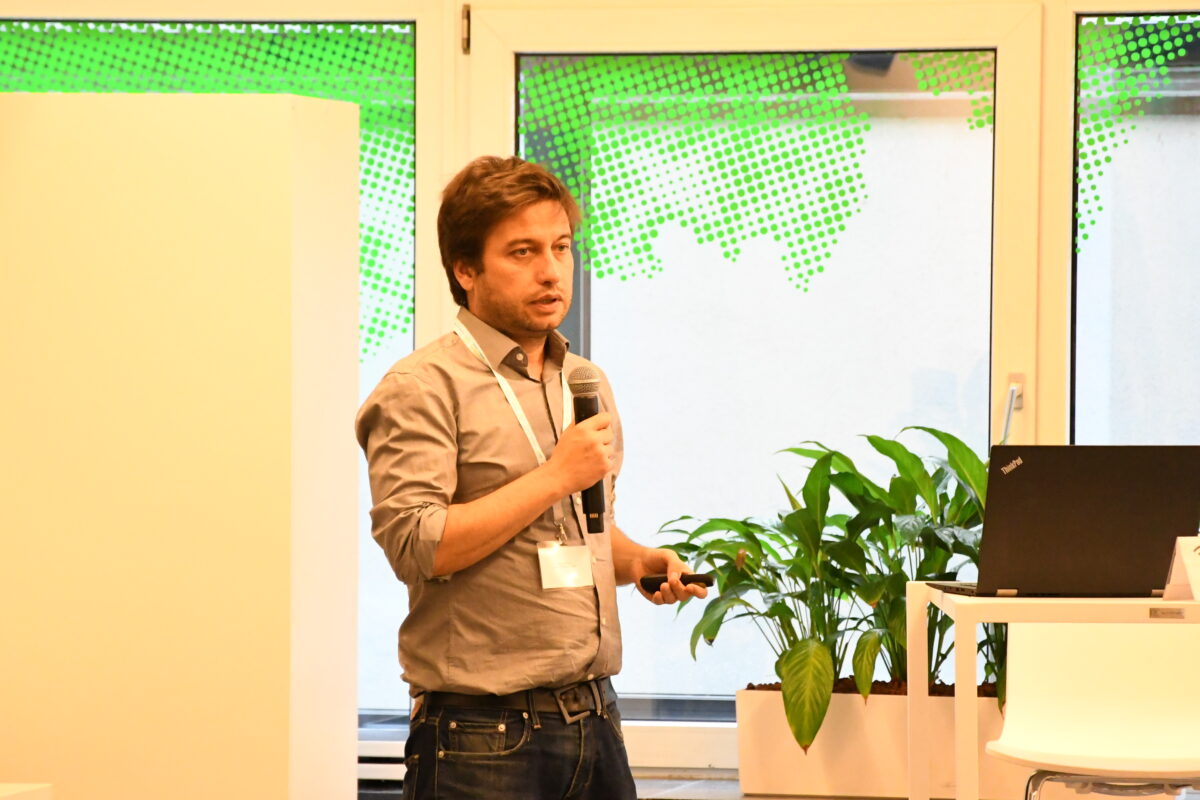 |
Manuel Reyes presented the ENFLATE project: ENabling FLexibility provision by all Actors and sectors through markets and digital Technologies. It seeks to decarbonise the energy system, encourage the electrification of heat and transport, as well as the connection of more clean but intermittent generation. The project gathers a multidisciplinary team from 7 EU countries (Greece, Belgium, Spain, Bulgaria, Sweden, Denmark, France) and 2 associated countries (Switzerland and United Kingdom). |
The project started in September 2022; it is a 48-month-long project. Its main objective is to design, implement and demonstrate a secure and collaborative interoperable platform of tools, a multi-energy/vector upgraded approach, building upon existing digital platforms of H2020 and research projects. Moreover, it aims at developing and demonstrating data-driven digital tools enabling the participation of cross-energy carrier assets in the flexibility markets value chain. The project will design and demonstrate cost-effective digital solutions and business models, and propose regulatory pathways and non-energy-related services that enhance sustainability in the EU.
Jesús Muñoz presented the TIGON project, an EU-funded project that demonstrates hybrid AC/DC electricity grid innovations for greener, more resilient and secure power networks. He showed the TIGON solution and its demo sites and use cases that are taking place in France, Spain, Finland and Bulgaria. The project started in September 2022 and will end in August 2024.
TIGON aims to achieve a smooth deployment and integration of intelligent DC-based grid architectures within the current energy system while providing ancillary services to the main network. To do so, TIGON proposes a four-level approach aiming at improving 1) Reliability, 2) Resilience 3) Performance, and 4) Cost Efficiency of hybrid grids through the development of an innovative portfolio of power electronic solutions and software systems and tools focused on the efficient monitoring, control and management of DC grids. These solutions are being demonstrated in two main Demo-Sites located in France and Spain, while additional use cases in the residential and urban railway sectors will act as niche markets for analysing and further solidifying the replication of TIGON developments after the project’s end.
TIGON has involved for this purpose a multidisciplinary team of 15 partners from 8 different European Member States with a well-balanced consortium integrated by 7 non-profit entities and 7 companies.
| Nora Ganzinelli presented another project IANOS: IntegrAted SolutioNs for the DecarbOnization and Smartification of Islands, which aims to test innovative energy technologies on 2 Lighthouse islands: Ameland (NL) and Terceira (PT). She showed the IVPP architecture and the technologies used (Tidal Kite, PCM Thermal Batteries, Flywheel, Hybrid Transformer, Biobased Saline Batteries). |  |
The project has been implemented in the two islands: Ameland (Netherlands) and Terceira (Portugal). After the initial phase, IANOS is considering to implement the solutions on three ‘fellow islands’’ to validate the replicability potential of the results of the test islands, and for this purpose they individuated Lampedusa (Italy), Bora Bora (French Polynesia) and Nisyros (Greece) as they showed positive results during the demonstrations.
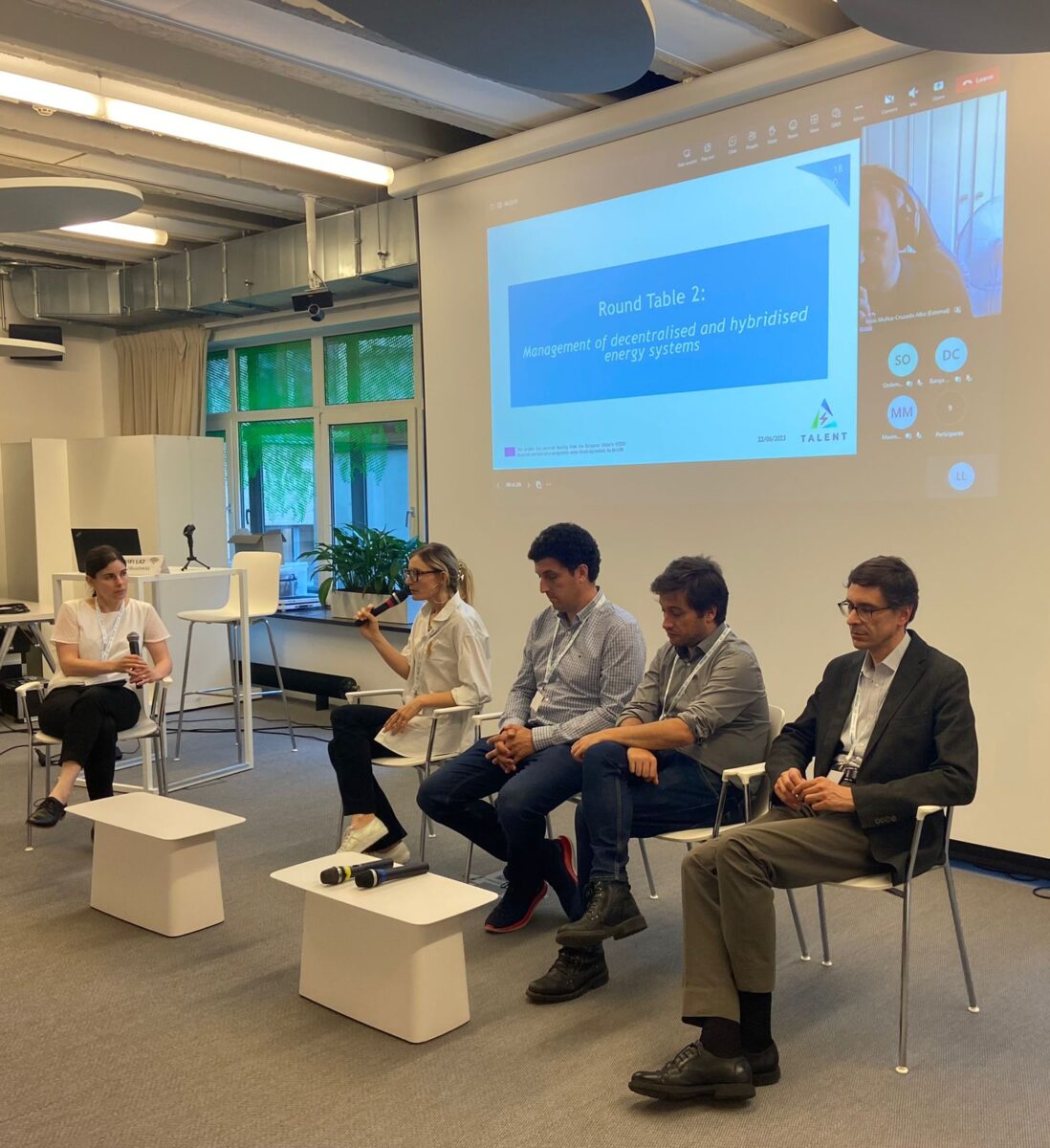
After the presentations, there was a discussion about how the energy sector is changing, which takes into account the growing use of renewable energy generation by enhancing grid flexibility while ensuring its stability, supply security, and local involvement.
Darja explained how the TALENT project impacted such transformation by developing the software tool able to manage a set of heterogeneous generation sources, loads and batteries according to different criteria of stability, efficiency, cost, maintenance, environmental and power flows requirements, accessing the state of all the energy sources, both RES and non-RES, and the batteries.
Nora Ganzinelli replied to a question related to local engagement within the IANOS project. She said: “We developed a strategy and are still working on it. The inhabitants of the two islands are fully involved to better understand the concept of the project, its objectives, and risks”.
She clarified that they make an effort to interact with the community and work closely with them and that the municipality's support is essential to the project.
On behalf of TALENT, we would like to thank all Consortium partners, guests and attendees of the Final event for your contribution!
